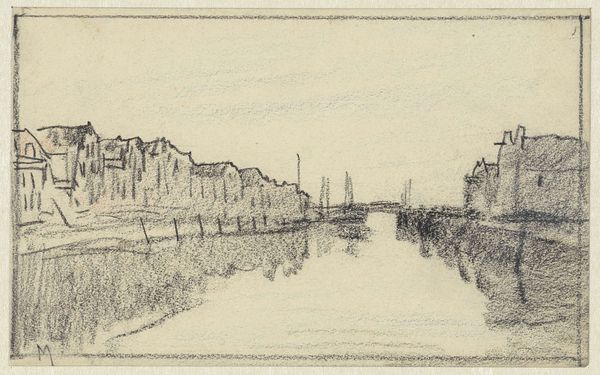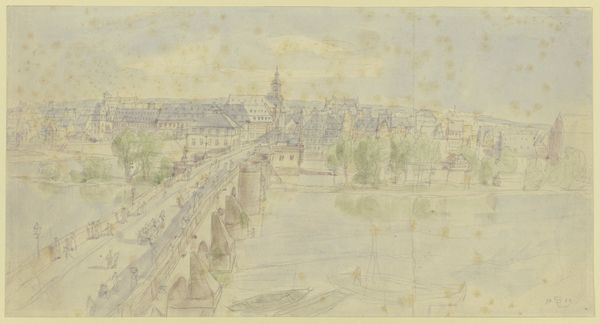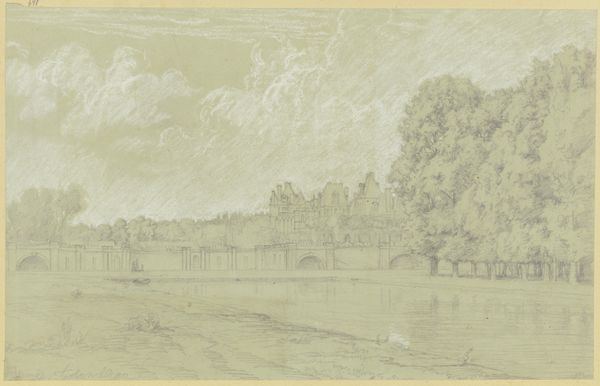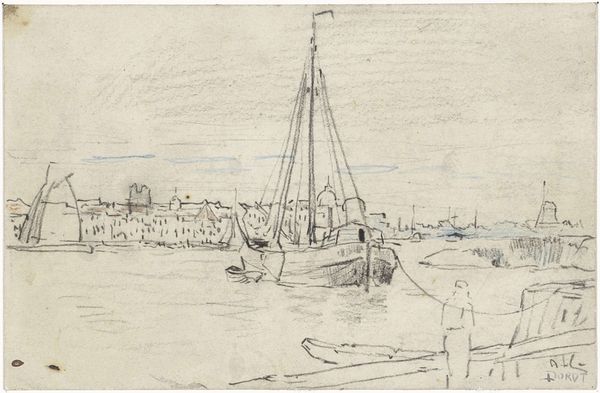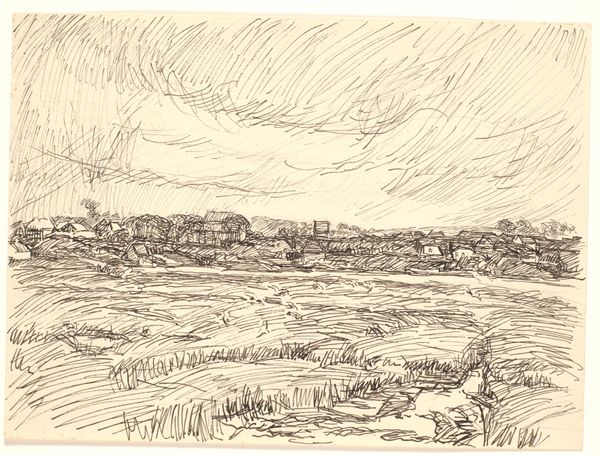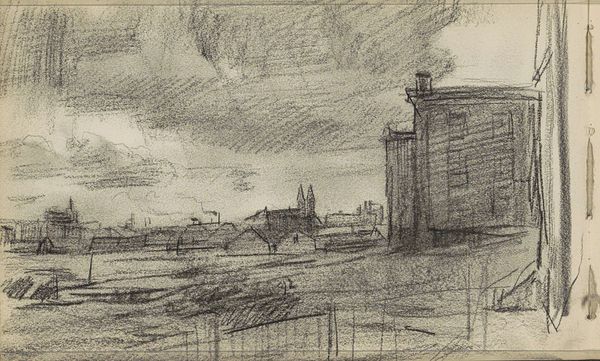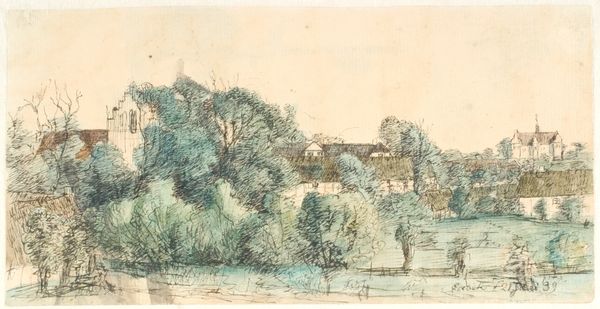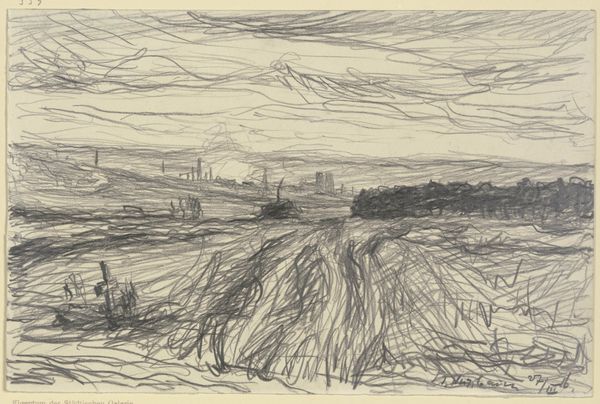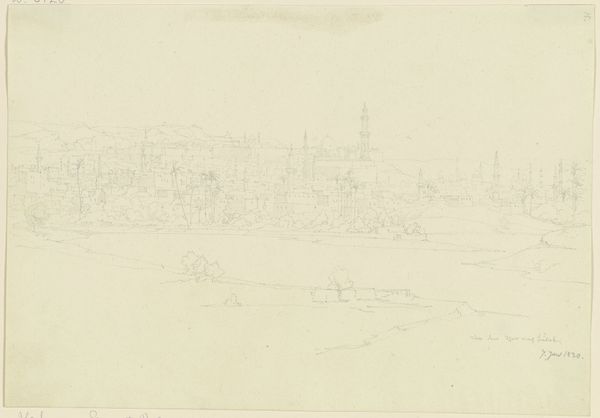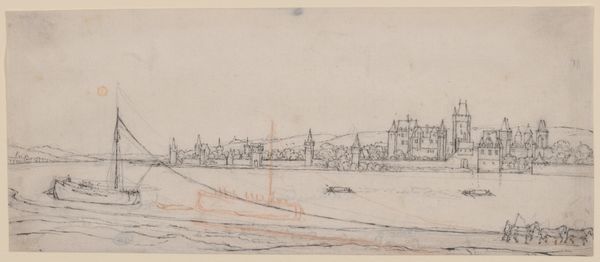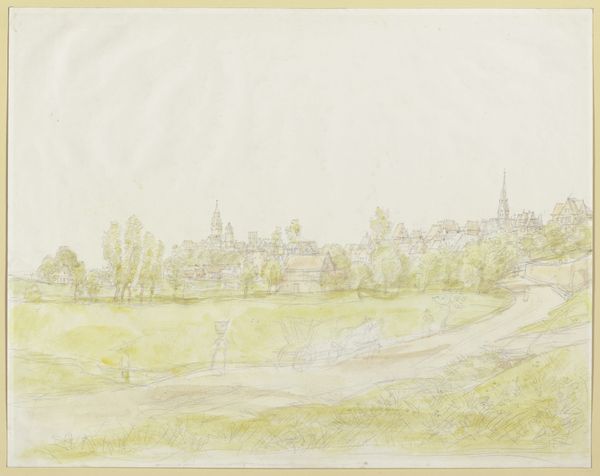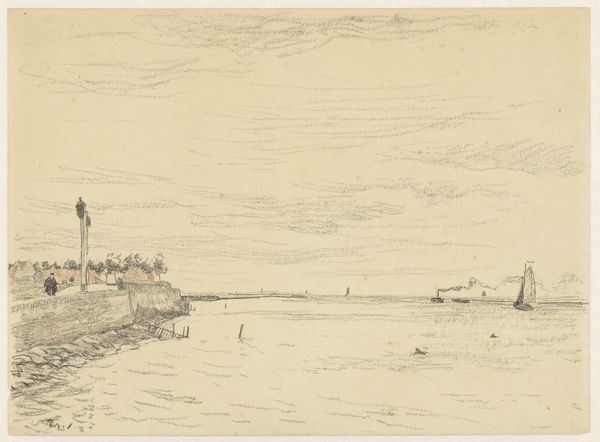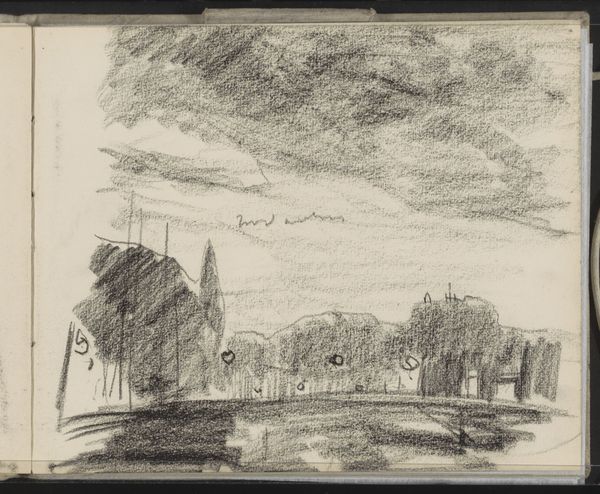
drawing, pencil
#
drawing
#
pencil sketch
#
landscape
#
pencil
#
cityscape
Dimensions: height 185 mm, width 352 mm
Copyright: Rijks Museum: Open Domain
Adolf le Comte sketched this view of Schoonhoven with pencil, crayon and brush in the late 19th or early 20th century. Le Comte’s landscapes of the Netherlands reflect the period’s shifting social landscape, marked by industrialization, urbanization, and a growing national consciousness. As the country modernized, artists sought to capture and preserve images of rural life and the Dutch landscape, often idealizing the countryside as a source of national identity and pride. Here we see the artist depict a quiet townscape with a silhouette of a windmill and church against an ominous sky. This aestheticization of the landscape, however, often glossed over the harsh realities of rural poverty and the social inequalities of the time. The unromanticized weather adds an emotional depth to the scene. Le Comte's drawing presents a vision of harmony and tranquility that speaks to a longing for stability in a rapidly changing world. Yet it also hints at the complexities and contradictions inherent in constructing a national identity rooted in the land.
Comments
No comments
Be the first to comment and join the conversation on the ultimate creative platform.
